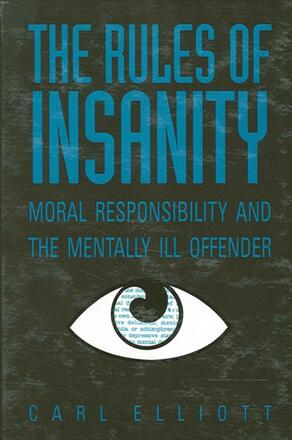
The Rules of Insanity
Moral Responsibility and the Mentally Ill
Alternative formats available from:
Addresses the question: Can we apply ordinary standards of responsibility to the mentally disordered offender?
Description
In The Rules of Insanity, Carl Elliott draws on philosophy and psychiatry to develop a conceptual framework for judging the moral responsibility of mentally ill offenders. Arguing that there is little useful that can be said about the responsibility of mentally ill offenders in general, Elliott looks at specific mental illnesses in detail; among them schizophrenia, manic-depressive disorders, psychosexual disorders such as exhibitionism and voyeurism, personality disorders, and impulse control disorders such as kleptomania and pyromania. He takes a particularly hard look at the psychopath or sociopath, who many have argued is incapable of understanding morality. Making extensive use of psychiatric case histories, Elliott explores the various ways in which mental illness can affect a person’s intentions and thus excuse him or her from moral responsibility.
Carl Elliott is Assistant Professor at McGill University Faculty of Medicine and Clinical Ethicist at Montreal Children's Hospital.
Reviews
"This is the best discussion of the insanity defense and diminished capacity that I have seen from an ethics point of view. Other treatments tend to be more legally oriented and to make light of the more fundamental philosophical and ethical issues. What is special is the author's easy familiarity with the clinical problems (he is a physician), his well reasoned, well written, jargon free argument, and his capacity to go back and forth from general principles to particular cases and disorders. This book has a unique niche--its conclusions are responsible--it teaches a lot. " -- Michael Schwartz, M. D., Case Western Reserve University